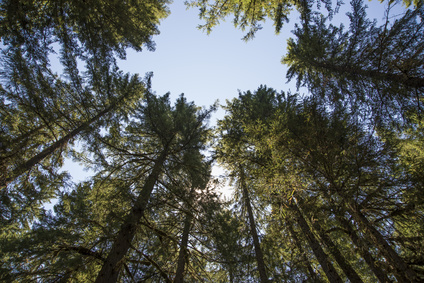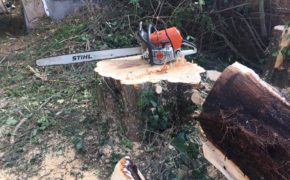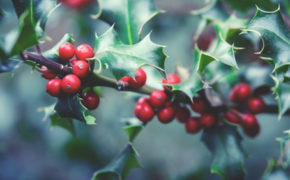
Get a quick no obligation quote It’s free and will only take a jiffy!
When Should I Prune my Douglas Fir Tree?
When is the best time to prune a Douglas fir tree? Why is Douglas fir tree pruning so crucial? And what are the most prevalent Douglas fir tree diseases? Read on to find out…
The Douglas fir, or Pseudotsuga menziesii to give it its scientific name, in a non UK native evergreen tree from the Pinaceae family which was introduced to the UK in 1827 by Scottish botanist David Douglas. The tree has the ability to grow to 55 metres in height and can live for more than 1,000 years, thriving mostly in western regions of the UK where rainfall levels are higher.
Used in the manufacture of beams, furniture, veneers, decking, flooring and cladding, the timber of the Douglas fir is of exceptional commercial importance.
The Douglas fir produces large cones of up to 10cm in length and the tree itself tends to grow into a distinctive conical shape.
Why prune a Douglas fir tree?
Fir trees by nature need little or no pruning in maturity. The distinctive shape is generally maintained naturally and is very appealing without any intervention.
However, there may be a few instances where the pruning of evergreen trees such as the Douglas fir becomes necessary.
As with any tree, pruning out branches that have become diseased or damaged, and removing dead wood, is highly recommended. Disease has a tendency to spread quickly, so early removal of the affected branches is vital. Dead branches also offer attractive habitats for insects, in particularly the boring type, which could be potentially fatal for the tree.
Douglas fir tree pruning will also help to boost the bushiness of the tree, prompting it to look fuller and thicker. This is only providing the pruning is undertaken at the right time, and is not overly harsh, otherwise you could permanently impair its shape and appearance.
It is important to be aware that evergreen trees grow from a central leader. This means that pruning techniques such as crown reduction or any practice that removes the top part of the trunk must be avoided, otherwise the height will be reduced, but the width will continue to expand, which will result in a rather odd shaped tree.
Removing lower limbs is also a no-go, even if you are trying to create space underneath the tree.
If when the tree is young you find central leaders are competing, you can remove the weaker ones in order to leave the strongest to take the tree to maturity.
When pruning, try to remember the rule of thirds: be sure to only ever remove up to a third of the tree at any one time, otherwise you could cause unnecessary stress to the tree from which it will take a long time to recover.
When is the best time for Douglas fir tree pruning?
The best time to prune a Douglas fir tree is during their dormant phase, which is early spring, before any new growth commences, or during their semi-dormant phase in mid-summer. Early spring is preferable as the new growth will quickly fill the gaps.
The new growth that emanates from an evergreen tree is known as ‘candles’; this is down to the candle-like shape of the branch tips. If you are looking to keep the tree in a more compact format, then cutting the candles back halfway before the needles unfold is the best course of action. Candling usually occurs between late March and mid-May depending on the local climate. Be sure to avoid pruning once the new needles have opened fully, otherwise the tree may end up with a misshapen appearance, because it will not usually be able to replace its growing tips.
What to look for when pruning a Douglas fir tree
The Douglas fir is susceptible to a variety of fungal diseases. Douglas fir adelgids (Adelges cooleyi) can also be an issue in some cases. These are aphid-like insects that are partial to most types of conifers. They feed by tapping into the tree and extracting sap. Infestations can lead to branch dieback, growth deformation and sometimes even death of the tree. Look out for fluffy white wax on the foliage as well as sooty moulds and mottling. Galls may also form which can affect the growth of new shoots.
Thankfully, much of the damage caused by adelgids is often minor and is usually well tolerated by the tree.
Tree Preservation Orders
You must never go ahead with any tree work if there is a Tree Preservation Order (TPO) in place. Verify this before you proceed and if you do find there is an Order in place then you will need to apply to the local authority for permission to take action. This may take up to eight weeks to transpire. Also, if the tree is situated in a conservation area, you’ll need express permission before undertaking works of any kind.
The importance of Douglas Fir tree pruning expertise
The only way to guarantee the best possible care and professional attention with regard to your Douglas fir tree is to engage the expert assistance of a suitably qualified tree surgeon. They will know exactly how and when to prune your Douglas fir tree and will also be in the best position to identify and deal with any diseases or pest infestations, such as adelgids.
When selecting a tree surgeon, always make certain you request checkable references and certificates that document their qualifications so you can be sure they are relevant. In addition, ask to see insurance documents so you have total reassurance that you are covered for the work being carried out. Lastly, if you can, try to enlist a tree surgeon with Trading Standards and local authority approval for a guarantee of quality and value for money.
If you have a Douglas fir tree that needs pruning or trimming, why not contact T.H. Tree Services? As fully qualified and highly experienced Trading Standards and local authority approved tree surgeons, we are able to offer specialist expertise across all aspects of Douglas fir tree pruning. For a free, no-obligation quotation, get in touch with our friendly experts on 01268 642814 or get in touch here.
Had a fallen tree in the early hours of Monday morning, called for quote and the team had it cleared on the same day. Really good communication when the lads were onsite and did a great job. Lots of pride in their work shown with the thorough clear up. Would thoroughly recommend.
Thank you Stuart for your kind review. We were glad to be able to help you with your fallen tree. If there's anything else you need in the future, please don't hesitate to get in touch.








